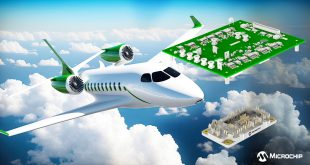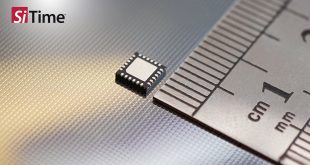Siemens has announced the latest version of the company’s NX software. Building on its legacy of best-in-class customer deployment readiness and data preservation, the latest version delivers the next generation of design, simulation and manufacturing solutions that enable companies to realise the value of the digital twin in the end-to-end process. This latest release unites electrical, mechanical and control systems through close integration with Mentor Graphics Capital and Xpedition portfolios for electrical systems, harness and PCB design. Combined they provide the only true multidisciplinary platform available in the market today.
 At the highest level, NX underpins tools used for systems driven product development based on the RFLP (Requirements, Functional, Logical and Physical) methodology, which now provides a significant connection between the logical and physical abstractions in both electrical and mechanical domains. Building on Convergent Modeling technology that allows designers to seamlessly work and model with mesh geometry in combination with precise geometry, the new version combines tools for design optimisation, advanced geometry creation, freeform shapes and parametric design to make generative design a reality.
At the highest level, NX underpins tools used for systems driven product development based on the RFLP (Requirements, Functional, Logical and Physical) methodology, which now provides a significant connection between the logical and physical abstractions in both electrical and mechanical domains. Building on Convergent Modeling technology that allows designers to seamlessly work and model with mesh geometry in combination with precise geometry, the new version combines tools for design optimisation, advanced geometry creation, freeform shapes and parametric design to make generative design a reality.
“This latest version of NX is clearly a major milestone for Siemens and their customers,” said Allan Behrens of Taxal. “Moving beyond previous convergent technology to encompass significant developments in areas of generative, additive and multidisciplinary design is impressive. With such significant additions, I’d suggest that clients will be delighted to see past and future investments evolve to deliver leading-edge capabilities for tomorrow’s more demanding, often complex product design and manufacturing ecosystems. These developments are part of a larger roll-out that also touches on areas including large assembly performance and model based engineering. The recent addition of Mentor’s EDA, electrical and embedded technologies, and the remarkably rapid integration of the electrical systems, harness and PCB elements with the NX ecosystem provides Siemens with unique solution coverage capabilities that go well beyond their competitors and are highly valuable for many, not least those in the automotive and aerospace industries.”
Electronics are fast becoming essential to all products, regardless of industry, making it more important than ever that electrical and mechanical designers collaborate throughout the product development process. Employing technology from recently acquired Mentor Graphics, the latest version of NX provides a direct connection between the design of electrical and mechanical systems. Linking the electrical tools and the 3D model, enables co-design including cross-probing, allowing designers of wiring diagrams and harnesses to work much more closely together, preventing costly and time-consuming rework due to electromechanical issues.
Multidisciplinary work is not limited to electrical design. Industries involving large amounts of piping, such as ship building, will benefit from close integration between instrumentation diagrams and 2D schematic layouts. New tools in NX allow engineers to lay out piping and instrumentation diagrams in two dimensions, while maintaining the design tied to the 3D space model. This synchronisation can help eliminate errors and save time as teams work more closely than ever before.
“As embedded technology continues to increase in complexity, it is critical for product design tools to stay ahead of the multidisciplinary technology needed to effectively create and innovate these advanced products,” said Bob Haubrock, senior vice president of Product Engineering Software, Siemens PLM Software. “With the latest version of NX, Siemens is providing a true multi-disciplinary platform, combining mechanical, electrical and control systems. Close collaboration between each of these design facets will eliminate errors, provide savings in time and cost, and ultimately enable our customers to drive more innovative designs.”
With increasing pressure to deliver products to market more quickly, generative design is now a necessity in product development. Integrating a wide variety of tools gives designers more flexibility and choice when dealing with complex geometries. Using these technologies in combination also allows companies to go beyond traditional solutions that focus solely on optimising shape in order to achieve truly multidisciplinary design.
In the constant drive to reduce component weight and improve resource usage, companies are looking to incorporate lattice structures into design in order to meet these goals without compromising on strength and structural integrity. The latest version of NX delivers new approaches to design for additive manufacturing, including the ability to add lattice. Convergent Modeling makes it possible to work directly with faceted geometry such as these lattice structures, saving companies from the lengthy data conversion process normally required. This enables companies to deliver lighter, stronger products to market in much less time.
“The fact that the faceted geometry now comes in as a convergent body and behaves pretty much as a sheet or solid body is very beneficial. It will make our workflow much more efficient and save time that we can spend on other things, such as more projects,” added Jonas Brochman, engineering method specialist of Manufacturing Engineering, GKN Aerospace Engine Systems, Sweden. “The ability to associatively compensate and reposition the faceted scan data of hardware in an associative and controlled way will greatly help us to increase efficiency and resulting quality.”
With this latest release, NX software upholds its decades-long legacy as the best-in-class solution for preserving customer data. It is possible, without any data translation, to open existing customer data from any previous release of NX and work with it directly in the latest version today.
 CIE Components in Electronics
CIE Components in Electronics



